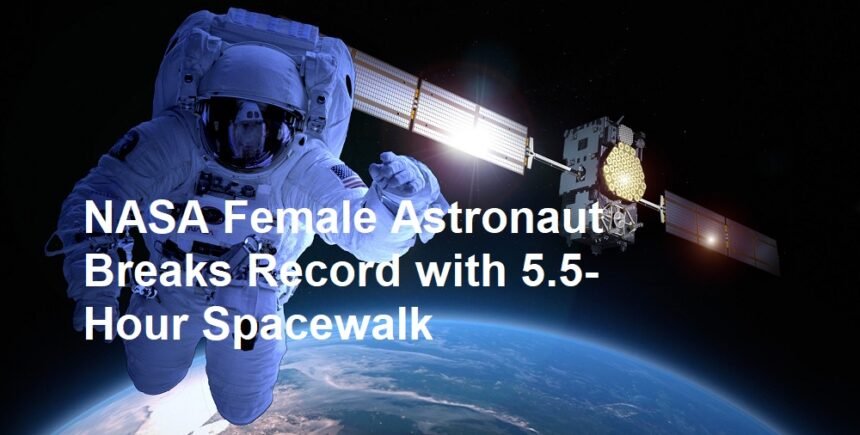In a historic milestone for human spaceflight and gender equality in space exploration, a NASA female astronaut has shattered previous records by completing a 5.5-hour extravehicular activity (EVA), setting a new benchmark for spacewalk duration among women. This achievement not only highlights her extraordinary endurance and skill but also marks a significant moment for NASA’s ongoing commitment to pushing the boundaries of human exploration.
The record-breaking spacewalk took place on February 2, 2025, during a routine maintenance and upgrade mission outside the International Space Station (ISS). The astronaut, whose name has become synonymous with perseverance and innovation in the space community, was part of a six-member crew tasked with installing new scientific instruments and conducting repairs on the station’s exterior. Her 5.5-hour EVA not only broke the previous duration record for a female astronaut but also demonstrated the advanced capabilities of NASA’s current extravehicular mobility units (EMUs).
NASA officials praised the astronaut’s performance, noting that such long-duration spacewalks are critical to the success of future missions, including planned lunar and Mars expeditions. “Her achievement is a testament to the rigorous training and unwavering dedication of our astronauts,” said a senior NASA spokesperson. “This record not only showcases her personal determination but also reflects our commitment to developing the technology and operational expertise needed for extended missions in deep space.”
The spacewalk was meticulously planned over several months, with extensive simulations and training sessions designed to prepare the astronaut for the physical and technical challenges of operating in the harsh environment of space. Her EVA involved critical tasks, such as installing a new communications array and performing repairs on one of the station’s vital cooling systems. These operations are essential for maintaining the station’s overall health and ensuring that it continues to support cutting-edge scientific research.
One of the key factors behind the success of this record-setting spacewalk was the advanced design of NASA’s EMUs. These spacesuits are engineered to provide enhanced mobility, improved life support, and greater durability under extreme conditions. Recent upgrades to the EMU design have focused on increasing comfort and reducing fatigue during prolonged EVAs, which proved crucial during the astronaut’s extended 5.5-hour operation. The new suits feature advanced materials that are both lightweight and resilient, allowing astronauts to perform complex tasks more efficiently.
Beyond the technological advancements, the achievement has also had a profound impact on the broader space exploration community. Women have long been underrepresented in space missions, and milestones like this inspire a new generation of female scientists, engineers, and explorers to pursue careers in STEM fields. “This record is not just a personal triumph—it’s a victory for all women in aerospace,” commented one of the astronaut’s colleagues. “It demonstrates that with the right training and support, women can excel and lead in the most demanding environments, including outer space.”
The record-setting EVA has garnered significant media attention, with experts noting its potential implications for future long-duration missions. As NASA prepares for its Artemis program and other deep space endeavors, the experience gained from extended spacewalks is invaluable. Data collected during this mission will inform improvements in spacesuit design, EVA procedures, and overall mission planning. Such insights are expected to play a crucial role in ensuring the safety and success of astronauts on future missions to the Moon and beyond.
The record-breaking 5.5-hour spacewalk by NASA’s female astronaut represents a remarkable achievement in human space exploration. Her performance underscores the importance of advanced technology, rigorous training, and unwavering determination in overcoming the challenges of the space environment. As NASA continues to set new milestones in its journey into the cosmos, achievements like this serve as powerful reminders that the spirit of exploration knows no bounds. This historic moment will undoubtedly inspire future generations to reach for the stars, affirming that the path to discovery is open to all, regardless of gender.













